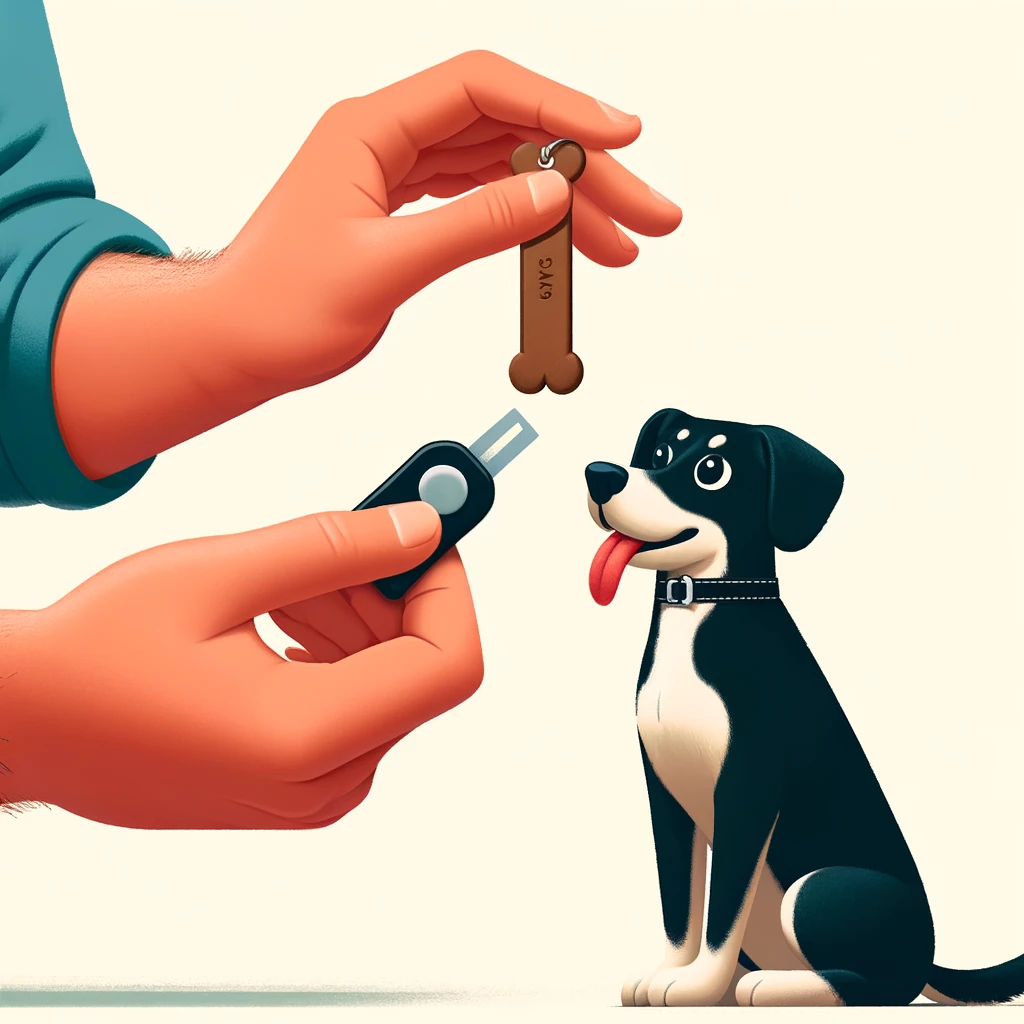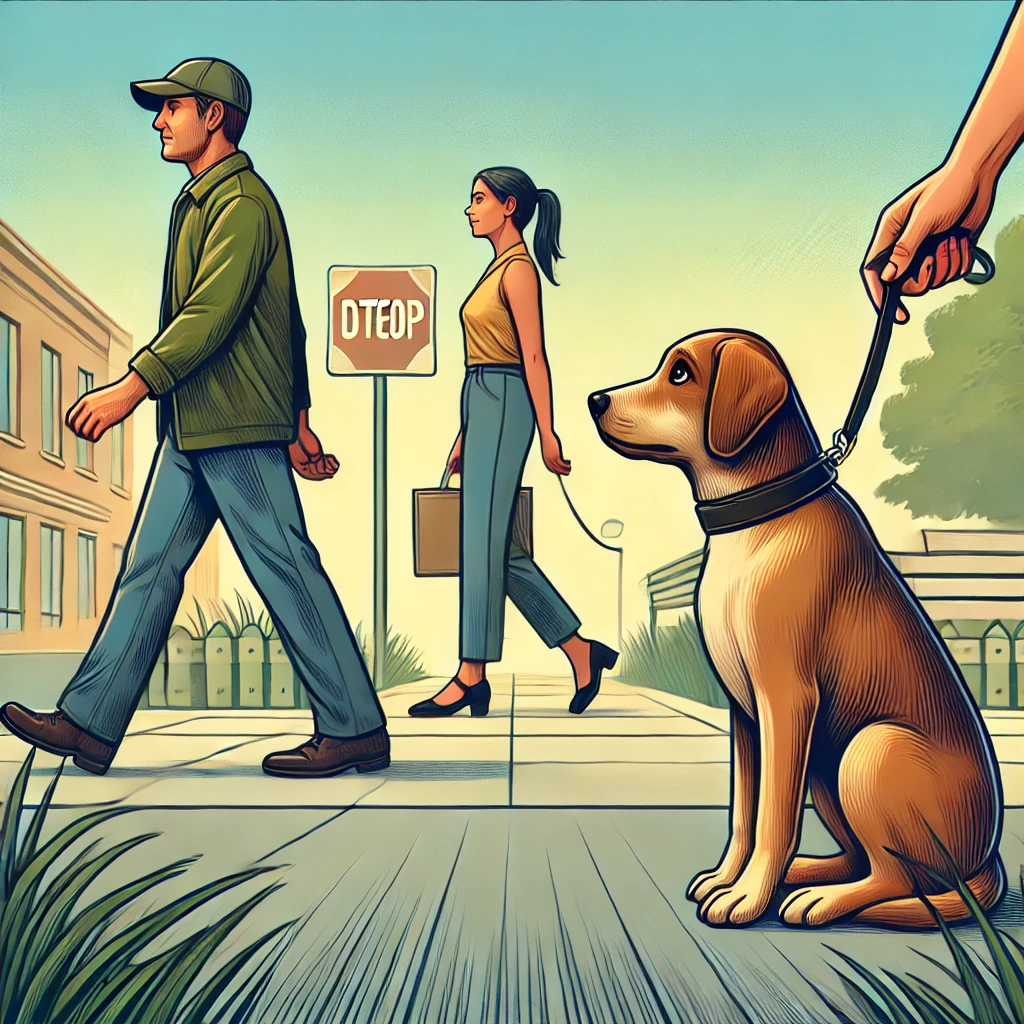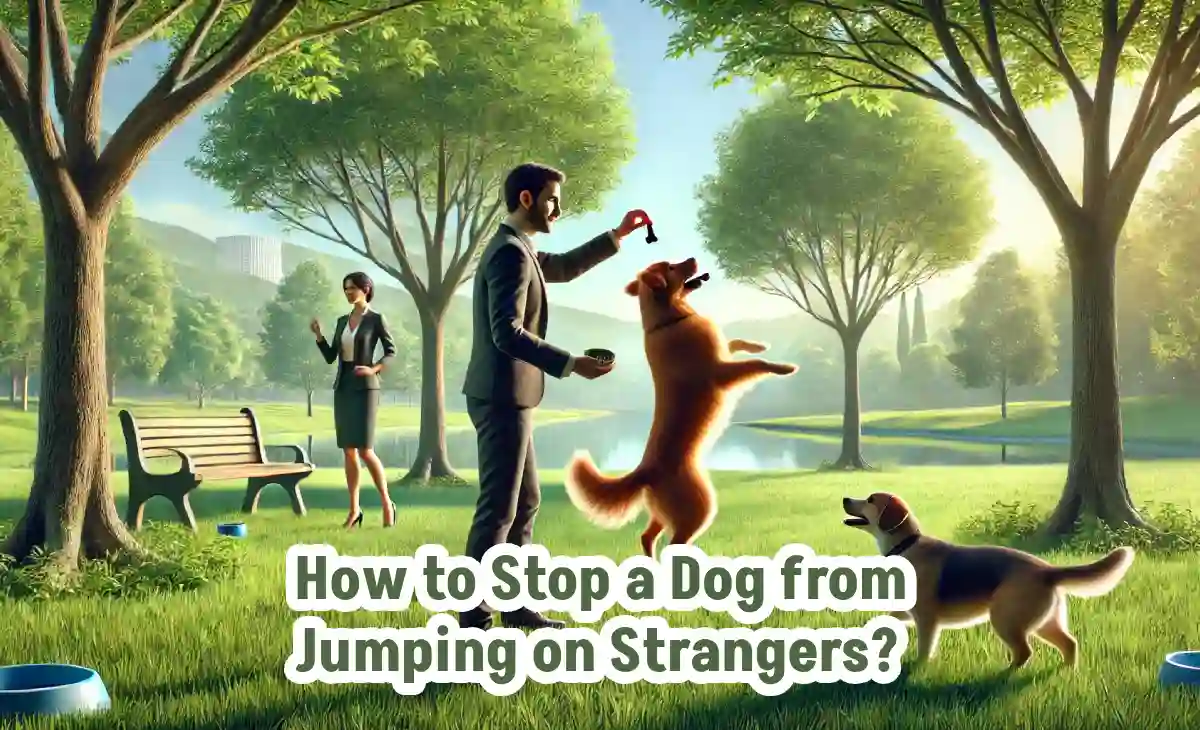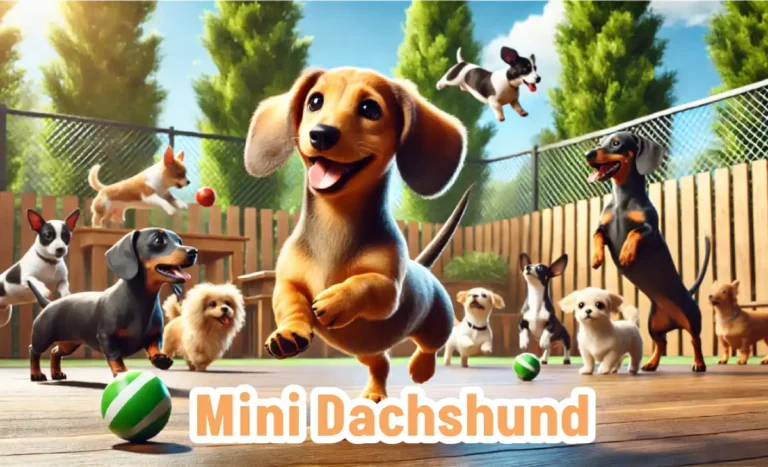Did you know? Untrained dogs jumping on people is one of the most common behavioral issues, often resulting from excitement or a desire for attention. While it might seem like a friendly greeting, jumping can make strangers uncomfortable or even lead to accidental injuries, especially if children or elderly individuals are involved.
This guide explores simple yet effective steps to train your dog to greet others politely, ensuring safer and more enjoyable social interactions.
Why Do Dogs Jump on People?
Understanding the reasons behind this behavior is the first step to addressing it. Dogs jump for several reasons, primarily due to excitement or because they’ve been unintentionally rewarded for it in the past.
1. Dogs Seek Attention:
Dogs, especially when young, learn quickly that jumping gets them noticed. If a dog has received attention when it jumps up, it will likely continue the behavior, as they see it as a way to get what they want. Teaching your dog that attention comes from sitting or staying calm can help change this habit.
2. Dogs Get Excited Easily:
Dogs naturally feel excited when they meet someone new, and jumping is a way of expressing that excitement. However, this behavior may not be welcome to every person they encounter. Training your dog to show excitement in other ways, like sitting or offering a paw, allows them to express joy without causing discomfort.
3. Dogs May Not Know What’s Expected:
Some dogs jump simply because they haven’t been trained to do otherwise. Dogs need clear guidance to understand what behaviors are acceptable. Teaching alternative behaviors like sitting or staying provides your dog with direction and makes interactions more enjoyable for everyone involved.
How to Train Your Dog to Stop Jumping on Strangers?
Training your dog takes patience, but with consistent methods and positive reinforcement, your dog can learn to greet people without jumping.
1. Use Positive Reinforcement:
Positive reinforcement is one of the most effective ways to train a dog. When your dog sits calmly or refrains from jumping, reward them with a treat or praise. Rewards help your dog understand that calm behavior gets attention, while jumping does not.
When someone approaches, instruct your dog to “sit.” If they remain calm, offer praise or a small treat. If they jump, withhold attention until they are seated again. Over time, your dog learns that sitting, not jumping, leads to rewards.
2. Teach Basic Commands:
Basic commands like “sit,” “stay,” and “off” help your dog understand what is expected of them. Start with training sessions in a distraction-free environment, such as your living room, then gradually increase distractions.
- “Sit” Command: Start with the “sit” command. Hold a treat above your dog’s nose and move it back until they sit naturally. Reward them immediately. Practice this command daily to reinforce the behavior.
- “Off” Command: When your dog jumps, say “off” firmly and wait until they calm down before rewarding them. Consistently using “off” helps your dog associate the word with keeping all four paws on the ground.

Managing the Situation When Guests Visit
Training in public settings is essential, but teaching your dog proper greeting behavior at home also matters. Many dogs jump when someone visits, so these techniques can help your dog greet guests calmly.
Prepare Your Dog Before Guests Arrive:
Before guests arrive, take your dog for a walk or spend time playing to help release extra energy. A tired dog is less likely to jump and can focus better on your commands.
Establish a pre-visit routine that includes a short walk or playtime. This routine helps reduce excitement, making it easier for your dog to control themselves.
Teach Boundary Setting at the Door:
When a guest enters, instruct your dog to “sit” and reward them only if they stay calm. Practicing this behavior reinforces positive associations with calm greetings.
Use the “sit” command at the door and reward calm behavior. Repeat this process every time someone visits to create a reliable routine.
Correcting the Behavior Outdoors
Training your dog to remain calm in outdoor settings can be challenging due to distractions. Using a leash and the correct commands provides more control over the situation.
Use a Leash for Control in Public:
A leash gives you more control over your dog’s movements. When someone approaches, have your dog sit and hold the leash to guide them if they start to jump. A firm “sit” or “stay” keeps their focus on you.
As people approach, use the “sit” command and maintain control with the leash. Gradually expose your dog to larger crowds, reinforcing calm behavior along the way.
Consistent Reinforcement in Public:
Be consistent when practicing commands outdoors. When your dog refrains from jumping, reward them with treats or praise to build a habit of calm greetings.
Each time your dog remains calm, offer praise or a treat. This consistent reinforcement helps your dog recognize that calm behavior is rewarded, even in distracting environments.

Additional Tips for Success
Training success comes from consistency and cooperation among everyone who interacts with your dog. Setting boundaries and using clear commands will help your dog learn faster.
Keep Training Sessions Brief and Engaging:
Dogs have short attention spans, so limit sessions to 5-10 minutes. Short sessions keep your dog’s interest and help them learn more effectively.
Change training locations or use different rewards to keep your dog’s attention. Variety makes training more enjoyable and reinforces desired behaviors.
Involve Family Members in Training:
Consistency is crucial when training. Make sure everyone in the household uses the same commands and follows the same steps. Mixed signals can confuse your dog and slow down training progress.
Develop a checklist with steps and commands, so everyone knows the proper approach. Consistency across family members accelerates your dog’s learning.
Find more information on dog training from trusted sources here.
FAQs
How long does it take to train a dog to stop jumping on strangers?
The time varies depending on your dog’s temperament and the consistency of training. Most dogs learn to stop jumping within a few weeks to a couple of months when trained regularly.
What should I do if my dog jumps on a stranger outside?
If your dog jumps on someone, calmly use the “sit” command and gently guide them down with a leash if needed. Apologize to the stranger and reward your dog once they settle down.
Can older dogs learn to stop jumping?
Yes, dogs of any age can learn new behaviors with patience and consistent training. Although puppies may pick up commands faster, older dogs can still learn to greet people calmly.
Should I punish my dog for jumping?
Using positive reinforcement works better than punishment. Punishing a dog for jumping can confuse them and may lead to other issues. Reward calm behavior and avoid giving attention for jumping.
Conclusion
Teaching your dog to stop jumping on strangers is achievable with the right methods and consistency. By understanding why dogs jump and using positive reinforcement, you can train them to greet others calmly.
Practicing commands, managing excitement, and involving family members in training are all steps that contribute to successful behavior change. With time and dedication, your dog will learn to meet strangers politely, creating a more pleasant experience for everyone involved.




